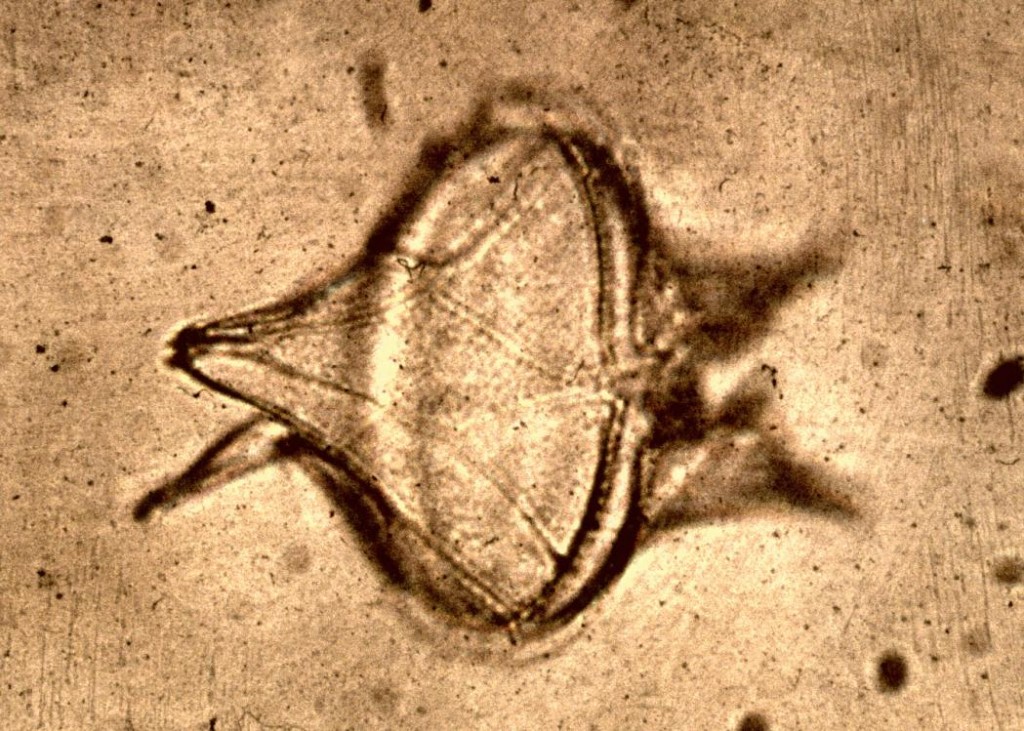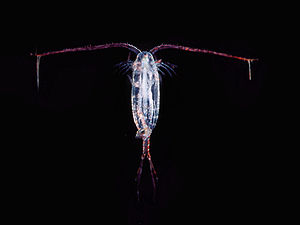PHYTOPLANKTON, ZOOPLANKTON, CORALS, AND ORPHEK LED LIGHTING
Phytoplankton serve as the base of the entire aquatic food chain. Most phytoplankton is too small to be seen as individual cells, but when many are present, they appear as a green discoloration of the water due to the presence of chlorophyll within their cells.
Phytoplankton is also responsible for nearly half of the total amount of oxygen produced by all plant life.

A microphotograph of a typical Dinoflagellate. This group
and the Diatom algae are responsible for most of
the oxygen on this planet. Photo courtesy of Wet Web Media
Like coral, phytoplankton depend on other elements to survive, particularly Vitamin B. Areas in the ocean that lack Vitamin B generally lack in coral growth.
Most stony corals or SPS/LPS corals do not require plankton to survive although there are a few that are said to ingest phytoplankton and those corals are Acropora, Siderastrea, Montipora, Porites, Astrangia, and Tubastraea. Stony corals are not well adapted to filter out phytoplankton but most soft corals and all clams feed on phytoplankton. Stony corals are more adapted to feed on Zooplankton which we will touch on later in this article.
Phytoplankton supplements using living cultures or cells are likely to be far more useful for feeding animals requiring phytoplankton to survive. Dead cells will not offer the same nutrient benefits as living cells so it is more beneficial to buy living cultures available from several suppliers.
Since phytoplankton depend on the sun for their food, propagating large cultures require intense lighting, the same lighting that Orphek LEDs are capable of providing. Orphek LED Lighting can sustain and propagate a phytoplankton culture in reef tanks providing the animal load requiring phytoplankton is balanced and weekly live culture supplements are added to the tank to make up for plankton ingested by the inhabitants.
Unlike phytoplankton, zooplankton are microscopic animals and can include fish larvae as well as other forms of microscopic life. They do not require light to survive but do feed on phytoplankton which do require light to survive. Stony corals rely heavily on zooplankton to meet their energy requirements. Stony corals receive the needed Vitamin B by ingesting zooplankton which in turn feed on phytoplankton containing Vitamin B.

An adult Copepod, a common zooplankton.
Photo credit - Wikipedia
So you are thinking, this sounds easy, just feed phytoplankton and zooplankton to my reef tank on a daily basis and I am home free. No, not quite that easy, the limitations of a reef tank can lead to problems doing this.
Dr. Ron Shimek noted that it would take 250-350ml of wet food per 100 gallons of water per day to approximate the food availability on a coral reef. Doing this to our systems would be a total disaster in terms of excess nutrients. Coral reefs have the ability to cleanse the system very effectively, likely simulating two or three 100% water changes per day, something we would not choose to do based on the expense of such an operation.
Orphek LED Lighting does not use a spectrum that favors the growth of cyanobacteria and/or nuisance algae and extensive testing has proven this in our lab.
Orphek LED lighting also allows corals to grow healthy and expand their polyps to the fullest which makes seining or straining plankton and zooplankton much easier for them.
No comments:
Post a Comment